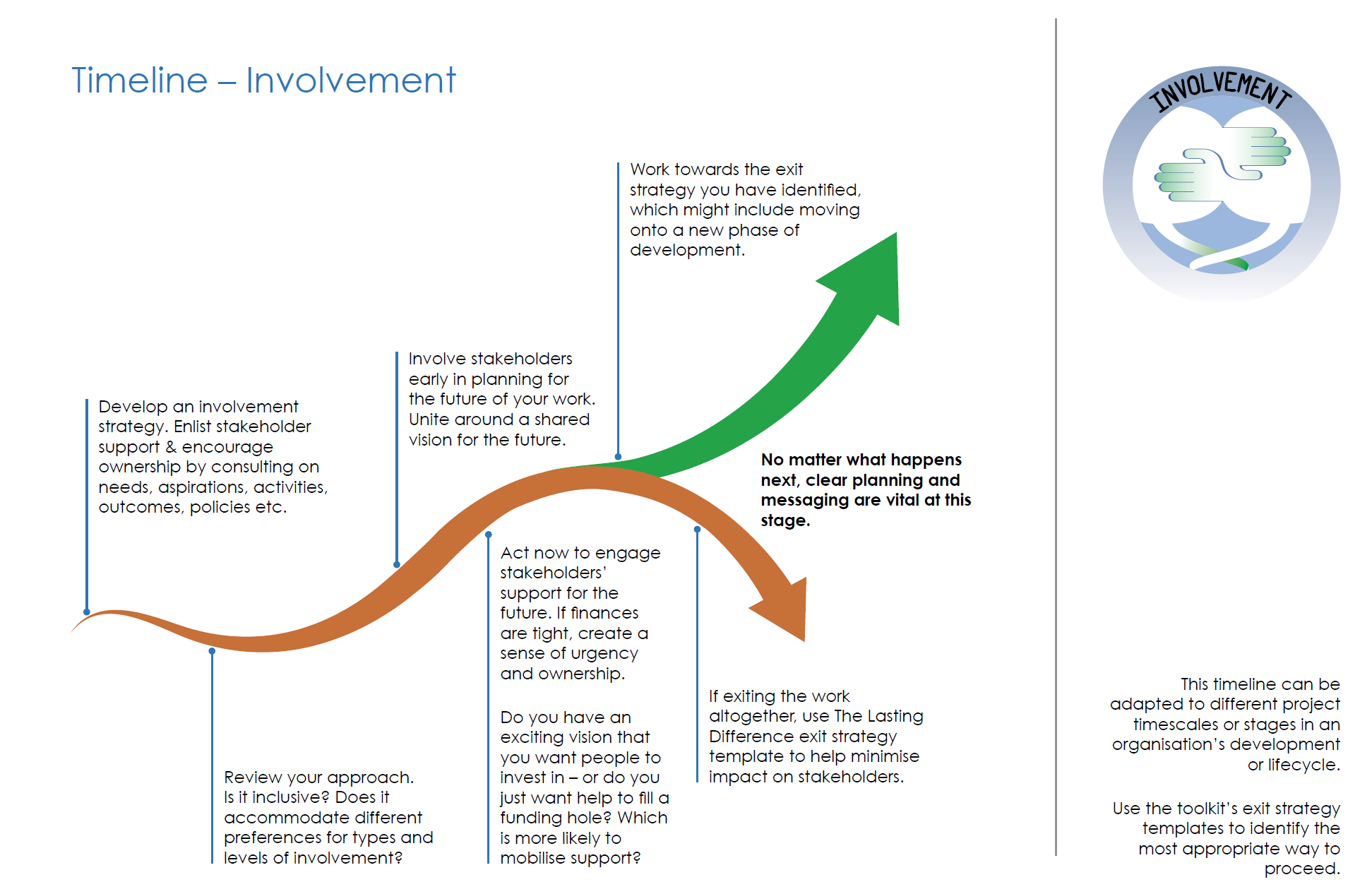Management, Management & leadership, Finance & law, Strategy
Sustainability: involvement
Ahead of his upcoming training course - Charity Survival and Sustainability - Graeme provides the third article in a series, exploring why non-profit protection comes from connection.
Commercial companies jealously guard their intellectual property to secure sustainable competitive advantage. Let’s explore why non-profit protection comes from connection.
If you are interested in sustaining your organisation or its impact, the most valuable question you can ask yourself is: Who does your work belong to?
Of course, there are no right or easy answers to this. But it’s a great way to realise that our work will only be sustainable if it matters enough to other people that they will support it, fund it, volunteer, campaign, promote and preserve it.
Click on the image below to enlarge
Principles
Involvement supports sustainability, generating buy-in (and ideas) from people, communities, staff, board members and partners.
It is a privilege to be involved in people’s lives. Proper participation and partnership are not easy, but they are worth it, connecting your work to the people it really belongs to. Meaningful involvement requires time and resources. It’s an investment and doesn’t happen by magic. It also takes persistence, patience, respect, trust, honesty, and a commitment to equality.
Involvement is also reciprocal. People are often willing to support you, but are you prepared to enlist and accept their goodwill? It helps to be clear about two things – what do people get from their involvement? And what you need from them? A common failing is that charities promote their work and assume that people will know what to do to support it. Being clear about what people get out of being involved makes it easier to make a clear and confident ask of them.
Involvement practices – ideas for action
- Be clear on your parameters for involvement – who you are involving, why and at what level?
- Make it easy for people to get involved – use different methods, times and approaches.
- Always give feedback on what happens as a result of involvement.
- Make sure you have the right environment, culture and rationale in place before you consider entering into a partnership.
- Partnerships can be challenging, so it is important to remember the aims and goals you and your partners share. Revisiting them together can be helpful.
- Be clear on what you bring and how you add value to partners (particularly donors, funders and commissioners). Ask them how you can help them meet their priorities (these might not be the obvious ‘presenting’ priorities). Why have they chosen to work with you?
This timeline, taken from the free Lasting Difference toolkit, shows that you can always improve involvement, wherever you are on your organisation’s lifecycle.
Join Charity Survival and Sustainability
Brand new for 2020, Charity Survival and Sustainability is a one-day workshop taking place on Tuesday 7 April to help you understand, assess, prioritise and implement strategies to tackle sustainability. You will even receive one copy of Graeme’s book – Making a Lasting Difference.


